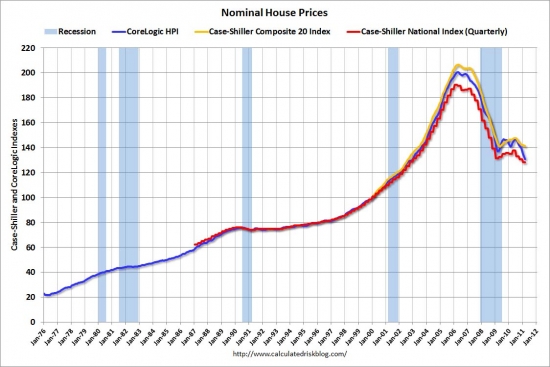realtors acting as agents to lenders are profiting from fraud by submitting bogus opinions of value to induce the lender to sell property below fair market value to straw buyers.

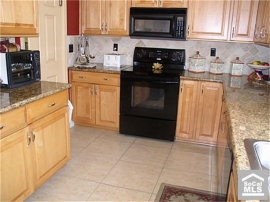
Irvine Home Address … 41 GOLDEN STAR Irvine, CA 92604
Resale Home Price …… $729,000

I want a house with a white picket fence
Don't look at me like I make no sense
He says I'm dumb
She says I'm scum
Dirty Rotten Imbeciles – You Say I'm Scum
There is a new scam in real estate that can only be accomplished by an agent, most often a realtor because most real estate agents are realtors, but there are likely some independent brokers caught up in this as well. The realtor must shirk their fiduciary responsibility to their client and knowingly tell lies to that client, usually a lender but sometimes a short-seller, to get them to sell property for less than it's really worth in the market in order to get some form of kick-back from the buyer. The following article details how this is done.
Real-estate scam that’s devastating prices
Lew Sichelman — June 10, 2011 
WASHINGTON (MarketWatch) — Question: My neighbor in Palm Springs, Calif., who claims to have millions or more in the bank, let his home with a $1 million mortgage go into foreclosure. A real-estate friend of his bought it from the bank and is renting it back to him. After one year, my neighbor plans to buy it back. It affects me as a homeowner because now we have a home in our community that shows a sale price for $600,000, instead of the current market of $725,000. How do I report such activities? —J. McK.
Answer: This type of thing is more prevalent than most people realize. According to CoreLogic, a real-estate and mortgage data firm headquartered in Santa Ana, Calif., lenders will lose more than $375 million this year alone when they sell undervalued houses based on the price opinions funneled to them by unscrupulous real-estate agents.
Aren't you shocked? Isn't there a realtor code of ethics against stuff like this?
Lenders who are foolish enough to take realtors at their word are asking for trouble. Those that fail to verify values through other brokers or automated valuation models are not doing enough to protect themselves.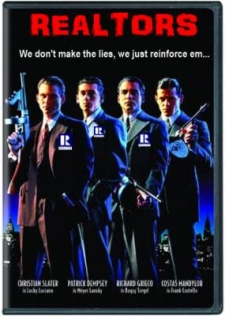
The scam is called “flopping,” and you are correct, it can have a devastating impact on property values because now, the “sale” becomes a comparable for all future appraisals of matching neighborhood properties.
Like flipping, flopping is the intentional misrepresentation of house prices. But whereas flipping usually takes place when housing prices are rising, flopping occurs when values are depressed.
When a house is flipped illegally, it is “sold” for a greatly inflated value in order to obtain a mortgage that is far greater than the place is really worth. When the seller, who is often in on the scheme, is paid at closing, the difference between the actual selling price and the loan amount is split between the perps, who are usually industry insiders who know how to scam the system.
What? There is another scam realtors engage in to profit from fraud?
Flipping for fraud was rampant during the housing bubble because lenders were giving out 100% financing loans, and it was relatively easy for appraisers and realtors to conspire with straw buyers to defraud lenders of hundreds of thousands of dollars. If loans were capped at 80% of value, it would be much harder to obtain an appraisal inflated enough to make the deal profitable. And now with appraisers being assigned randomly, it makes flipping fraud nearly impossible.
When a house is flopped, it is usually owned by a underwater borrower who has asked the lender to approve a short-sale at a price that’s less what is owed. Unbeknownst to the owner or the lender, the real-estate agent supplies one or more opinions of valuation that show the house to be worth one amount when it is really worth much more on the open market.
When the lender agrees to take the lower price, the agent purchases the property in his name or that of a straw buyer and immediately flips the property to an honest-to-goodness buyer-in-waiting at a higher price than the one negotiated with the lender, with the difference split between the participants.
A classic example of flopping comes from the recent post I did on How lender liquidations lower home prices and bring affordability:
I discovered this neighborhood while looking at another auction property nearby. The property of interest is in a cluster product neighborhood in a nice part of Henderson, Nevada. All the properties were built in 2005 and sold new in the mid 200s.
We all know prices are falling throughout Las Vegas, but when I saw the comps for this property, I couldn't believe my eyes.
The list of comparables below are all in the cluster neighborhood, and they are arranged in descending order of closing dates. Take a careful look at the sales price in the column second from the right.
If I had looked at these comps last November, I would have estimated the resale value at between $105,000 and $110,000. Further, I would have likely set an initial asking prices of about $114,000 without much fear of a low appraisal forcing me to lower my price to an FHA buyer.
What would possess an asset manager at a bank to let properties go in the mid 60s? There are limited possibilities:
Capitulation may be motivating asset managers to take any deal presented to them. If they have a caseload of thousands, they care less about maximizing recovery and more about processing files. The asset manager could also be incompetent.
Fannie Mae has the Homepath program where they allow owner occupants to bid on properties and sell them at a reduced price. I understand their desire to put owner-occupants back into homes, but when they let them go for 40% under comps, they merely take down the values throughout the neighborhood and dramatically increase the pain for other owners and sellers in the area.
Another possibility is fraud. The listing agent could have submitted comps from properties in another neighborhood to the lender to justify a $65,000 selling price. The lender may have approved this sale without realizing there were model-match properties in the same neighborhood selling for much, much more.
The property at 556 Albacate was immediately put on the market. It was withdrawn a short time later. Lenders are wise to the flopping problem, and to combat this issue, most lenders will not underwrite a loan on any property sold twice in the last year. When the lender buys the property at auction is considered sale number one, and the fraudulent sale to the flopper is sale number two. By preventing sale number three from occurring within a year of sale number one, lenders can at least force the floppers to wait a while to get their ill-gotten gains.
Back to the article:
Appraisal and valuation misrepresentation continue to be a big bugaboo in the mortgage sector, even in a weak housing market. And flopping is one of the biggest issues because lenders tend to take agents at their word. But when they do check, they are shocked at what they find.
Should they be shocked? They trusted a realtor, and they were deceived? Lenders need to file a couple of lawsuits against a few realtors to frighten the others. If you don't go after a few of the offenders, they will multiply like a virus.
Some real-estate agents are “clever, even more so than criminals,” says Michael Richardson of BrokerPriceOpinion.com, a firm which assists lenders in obtaining accurate valuations. “I’ve seen them change [comparables] to fit the scenarios they are trying to get away with. I’ve seen it where they enter fictitious listings and then remove them later. And I’ve seen it where they’ve recruited other agents” to participate in their schemes.
There must be a provision in the realtor code of ethics to address criminality, right? Will OCAr go after Mr. Richardson for his observations?
Flopping costs lenders tens or sometimes hundreds of thousands of dollars per transaction because the house could have been sold for more than they accepted. But it costs sellers big money, too. How? Because if you are a seller and your state allows your lender to pursue a deficiency judgment against you, you could end up owing more than had the realty agent not taken advantage of the lender’s ignorance — or trust — of your home’s actual value on the open market.
Think about that one. Borrowers are still liable for the shortfall on the mortgage after a short sale or foreclosure under most circumstances. So far lenders haven't come after them, but they will in time. If the seller gets flopped by the listing realtor, the lender will come back after the seller for an even larger shortfall. It may look like banks are eating the losses, but they will seek to push those losses back onto the borrowers if they can.
To avoid becoming a flopping victim, sellers would do well to pay $95 to $100 for a separate broker price opinion from a disinterested party to make sure the value set by their agent is at least in the ballpark. Richardson says he’d do this before even hiring an agent to put together a short sale.
Sellers should also perform the usual due diligence — with your local realty association, better business bureau, consumer affairs agency and the state real-estate commission — to make sure their agent hasn’t been caught pulling a fast one on others.
Does anyone really think the local association of realtors is going to tell you if one of their agents did anything wrong? First, they probably wouldn't care, and second, the association would be sued by the member realtor for loss of income. The state Department of Real Estate would be the best resource.
If they try it once and are successful, chances are they’ll try it again — and again.
You think?
In your case, reporting these miscreants is easier said than done because what has taken place is not yet a crime, only an immoral act, and a pending one at that.
The realtors engaged in flopping aren't much concerned with the morality of what they do. The don't see immorality in manipulating their buyer clients through bogus claims of boundless appreciation, and they embrace bullshit as a standard sales technique. If that behavior is okay, why would they have any compunction about manipulating sellers with questionable comparables?
I don’t even think the lender can do any more than make sure it never deals again with the real-estate agent — or your neighbor, for that matter.
Nevertheless, you should report the agent to your local realty association as well as his broker.
Reporting to the realtor association will generally be wasted effort. If the broker has ethics, perhaps he or she will do something about it. One can only hope.
And you should also report what has transpired to the lender which originally foreclosed on the property. It is the one which is out big bucks here.
Perhaps the lender might be able to seek a deficiency judgment against your neighbor to recover its loss once the place is resold at a much higher price. California is one of those states where deficiency judgments are not permitted. But perhaps the lender can persuade a judge to rule otherwise in this obvious case of fraud.
A difficult to prosecute case at a time when there are thousands of questionable transactions isn't going to get much traction at the District Attorney's office.
Realistically, there isn't much anyone can do. That's why realtors feel emboldened to do it.
It didn't go up in value, and they couldn't afford it
Today's featured property was purchased just as the housing bust began in earnest. The buyers probably thought they were getting a good deal at the time, but it didn't work out that way.
They paid $815,000 on 9/4/2007 using a $417,000 first mortgage, a $316,500 HELOC, and an $81,500 down payment. This is listed as a short sale, so the HELOC was used to buy the property. The debt load must be difficult for them as evidenced by their default.
Foreclosure Record
Recording Date: 09/07/2010
Document Type: Notice of Rescission
Foreclosure Record
Recording Date: 07/21/2010
Document Type: Notice of Default
Perhaps these owners have unemployment problems or some other reason they are selling now, walking away from their down payment, and dealing with trashed credit. Many in these circumstances simply paid too much for the house because they expected the value to go up and provide them an endless fountain of HELOC money from which they could make their payments. It didn't work out that way.


Irvine House Address … 41 GOLDEN STAR Irvine, CA 92604 ![]()
Resale House Price …… $729,000
House Purchase Price … $815,000
House Purchase Date …. 9/4/2007
Net Gain (Loss) ………. ($129,740)
Percent Change ………. -15.9%
Annual Appreciation … -2.9%
Cost of House Ownership
————————————————-
$729,000 ………. Asking Price
$145,800 ………. 20% Down Conventional
4.49% …………… Mortgage Interest Rate
$583,200 ………. 30-Year Mortgage
$126,494 ………. Income Requirement
$2,952 ………. Monthly Mortgage Payment
$632 ………. Property Tax (@1.04%)
$0 ………. Special Taxes and Levies (Mello Roos)
$152 ………. Homeowners Insurance (@ 0.25%)
$0 ………. Private Mortgage Insurance
$50 ………. Homeowners Association Fees
============================================
$3,785 ………. Monthly Cash Outlays
-$492 ………. Tax Savings (% of Interest and Property Tax)
-$769 ………. Equity Hidden in Payment (Amortization)
$242 ………. Lost Income to Down Payment (net of taxes)
$202 ………. Maintenance and Replacement Reserves
============================================
$2,877 ………. Monthly Cost of Ownership
Cash Acquisition Demands
——————————————————————————
$7,290 ………. Furnishing and Move In @1%
$7,290 ………. Closing Costs @1%
$5,832 ………… Interest Points @1% of Loan
$145,800 ………. Down Payment
============================================
$166,212 ………. Total Cash Costs
$44,700 ………… Emergency Cash Reserves
============================================
$210,912 ………. Total Savings Needed
Property Details for 41 GOLDEN STAR Irvine, CA 92604
——————————————————————————
Beds: 4
Baths: 2
Sq. Ft.: 2580
$283/SF
Property Type: Residential, Single Family
Style: Two Level, Cape Cod
Year Built: 1976
Community: 0
County: Orange
MLS#: S661938
Source: SoCalMLS
Status: Active
——————————————————————————
A Must See Perfect Family Home in the Heart of Irvine. Excellent opportunity on this Short Sale. This four bedroom home is located on a very quiet loop street next to Deerfield Community Park, Just half a block walk to the community pool and spa, park, playground and Tennis Courts. Walk to the award winning Deerfield Elementary and Venado Middle School- both without crossing a single street. Home has recently been completely upgraded with tile floors throughout the main level, ceiling fans everywhere, new kitchen with granite countertop, new bathrooms, 3 fire places all tiled in the living room family room and the master bedroom. Large specious back yard beautifully landscaped, with retractable motorized awnings. Energy efficient with 3 zones A/C, Whole house fan/blower and individual laundry room. It s perfect interior location, LOW Association Dues, and NO MELLO ROOS makes this one a Must See Turn Key Home!
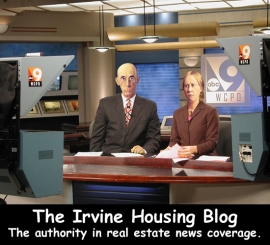
Another realtor demands silence!
Since the topic of the day is the bad behavior of realtors, I thought I would conclude on Friday with the amusing story from the OC Register.
The name has been deleted because I don't want to further humiliate this lady, but if you want to know who she is, you can find out on your own.
Police: Realtor fired gun to scare away people being loud
By KRISTY CHU — THE ORANGE COUNTY REGISTER
June 16, 2011
MISSION VIEJO – A 65-year-old realtor has been arrested on suspicion of discharging a firearm in a negligent manner after police say she fired a gunshot to scare people talking loudly near her home.
A group of eight people in their early 20s were hanging out at Lake Mission Viejo near the 22000 block of Formentor around 11:45 p.m. on Tuesday, police said. A woman who lives near the lake went out onto her balcony and yelled at them to be quiet.
I don't know why she yelled at them. She should have lodged a complaint with the ethics board at OCAr, and they could have demanded the rowdy 20-somethings appear in front of OCAr's kangaroo court to be found guilty of exercising their right of free speech. Since it doesn't matter to OCAr whether or not the people they accuse are in their organization, this woman could have lodged her complaint and made these young people shut up without resorting to shooting a gun.
Police said the group saw the woman return to her balcony a short time later with an object. They then heard what sounded like a gunshot and saw a flash from the gun's muzzle as it was discharged from the balcony. According to police, an individual in the group shouted up to the woman's balcony to ask if she had a gun, to which the woman responded that she did.
The group left the lake and called police to report the incident. The woman also had called police to report people being loud near the lake.
Deputies were sent to the woman's home to respond to the noise complaint and discovered she was intoxicated. The woman first told deputies she had only fired a flare gun, but later admitted to firing a gun up into the air. Deputies located a 38-caliber pistol with one spent round.
So a drunk realtor shoots a gun to stop people from talking, and then she lies to the police about it. Wow! BTW, what is it about realtors that makes them think they can force people to be silent?
I hope she isn't the one behind the complaint against me. Will she show up to the hearing with a firearm? Is OCAr going to install metal detectors at its doors to keep guns out of the proceedings?
Deputies arrested Dirty Harriet, 65, on suspicion of discharging a firearm in a negligent manner. Dirty Harriet, whose occupation is listed as a realtor on arrest records, is being held in lieu of $25,000 bail.
State Department of Real Estate records show a Dirty Harriet realtor employed by Rainbow Realty Corp. Century 21 Rainbow Realty's website lists a Dirty Harriet realtor as a realtor with the company, which specializes in “working with seniors in listing and selling homes.“

Contact the writer: 949-454-7343 or kchu@ocregister.com
realtors are complaining that I am making them look bad. I don't make this stuff up people. Based on recent news events, I think it's fair to say realtors are doing that all on their own.








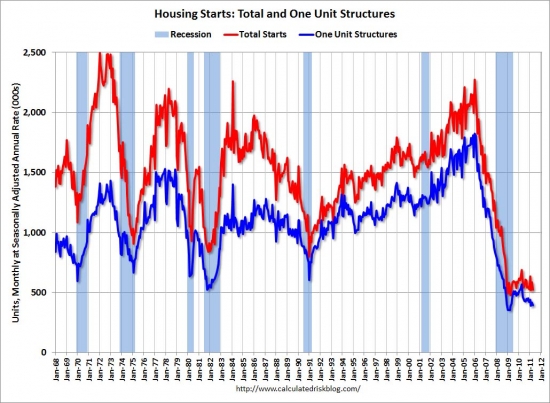


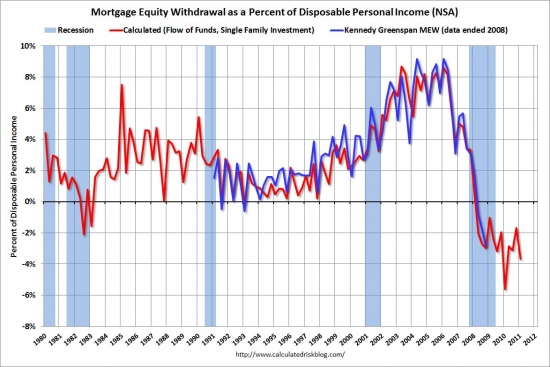
.jpg)


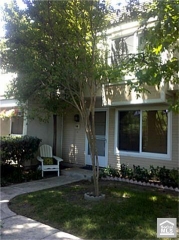
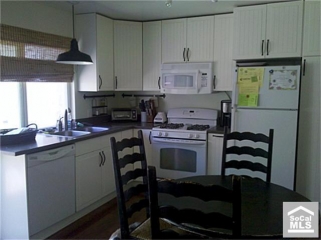











 I used to work for a developer who purchased tax-credit apartments with rent subsidies. He stopped doing it because he was losing too much money. Any time market rents are capped, there is no opportunity to improve the property or make up for needed repairs. For example, if the property requires an unbudgeted $100,000 repair, and the owner makes that repair, he can do nothing to recapture his investment. With an infinite potential for downside and a cap on upside, these properties fall into disrepair, and nobody wants to own them. And what's worse, lenders don't want to lend on them because they don't want to step in to the owner's shoes in the event of foreclosure.
I used to work for a developer who purchased tax-credit apartments with rent subsidies. He stopped doing it because he was losing too much money. Any time market rents are capped, there is no opportunity to improve the property or make up for needed repairs. For example, if the property requires an unbudgeted $100,000 repair, and the owner makes that repair, he can do nothing to recapture his investment. With an infinite potential for downside and a cap on upside, these properties fall into disrepair, and nobody wants to own them. And what's worse, lenders don't want to lend on them because they don't want to step in to the owner's shoes in the event of foreclosure.
.jpg)




.png)















